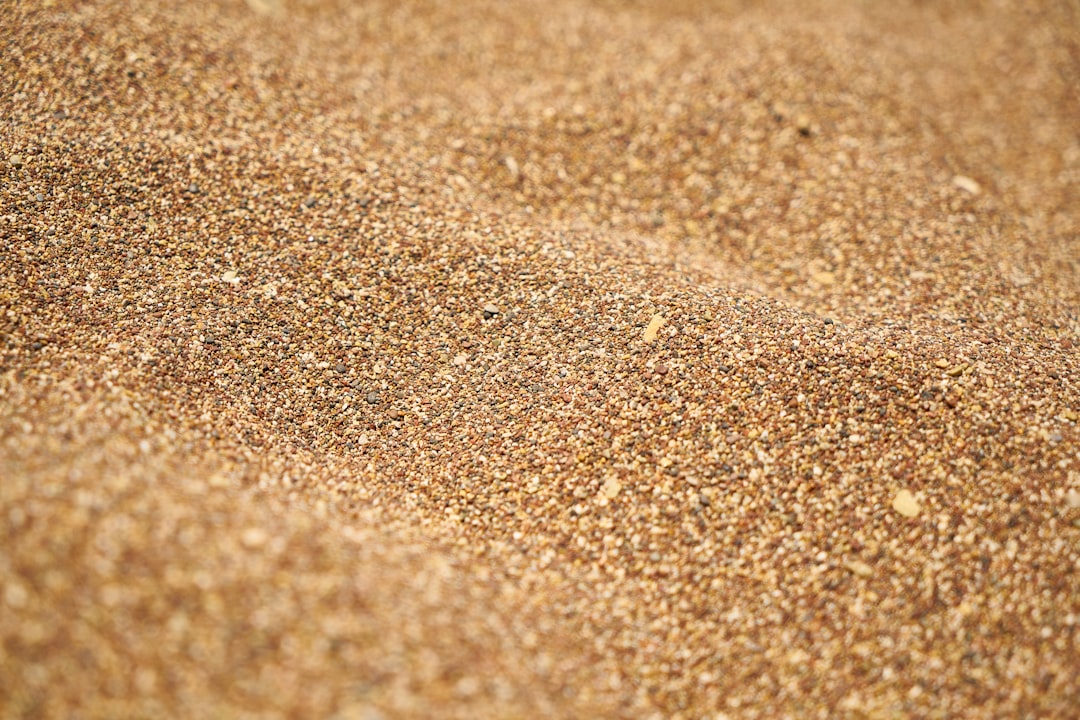Sandy soil may seem like a curse for gardeners at first glance—it drains water too quickly, doesn’t hold onto nutrients, and can leave plants struggling to thrive. However, with the right techniques and amendments, sandy soil can be transformed into a fertile, productive growing medium. Its natural drainage and ease of cultivation can become strengths with a little care.
In this guide, we’ll explore the unique characteristics of sandy soil, the challenges it presents, and the strategies you can use to retain moisture and nutrients for a flourishing garden.
What Is Sandy Soil?
Sandy soil is made up of large, coarse particles that feel gritty to the touch. These particles create spaces that allow water to drain quickly and nutrients to leach away. While sandy soil is easy to dig and warm up in the spring, its fast-draining nature can make it difficult for plants to access the water and nutrients they need.
Challenges of Gardening in Sandy Soil
- Rapid Water Drainage: Water flows through sandy soil quickly, leaving plants thirsty.
- Nutrient Leaching: Essential nutrients like nitrogen and potassium are washed away before plants can absorb them.
- Poor Water Retention: The soil dries out quickly, especially in hot climates.
- Low Fertility: Sandy soil lacks organic matter and natural nutrients.
Signs of Sandy Soil in Your Garden
- Soil feels gritty when rubbed between your fingers.
- Water drains quickly, leaving the soil dry soon after rainfall or watering.
- Plants show signs of nutrient deficiencies, such as yellowing leaves or stunted growth.
- The soil is light in color and easy to dig.
If this sounds familiar, don’t worry! Sandy soil can be improved significantly with the right approach.
How to Retain Moisture and Nutrients in Sandy Soil
1. Add Organic Matter
Organic matter is the cornerstone of improving sandy soil. It helps retain moisture, holds onto nutrients, and improves soil structure.
- What to use: Compost, well-rotted manure, leaf mold, or peat moss.
- How to apply: Spread a 2-3 inch layer of organic matter over your garden and mix it into the top 6-8 inches of soil. Replenish annually to maintain its benefits.
2. Use Mulch
Mulch helps reduce water evaporation and keeps soil temperatures stable.
- Benefits: Conserves moisture, prevents weeds, and adds organic matter as it breaks down.
- What to use: Organic mulches like straw, wood chips, shredded leaves, or grass clippings.
- How to apply: Spread a 2-4 inch layer of mulch around your plants, leaving a small gap around the base to prevent rot.
3. Incorporate Clay or Silt
Mixing clay or silt into sandy soil can improve its ability to hold water and nutrients.
- How to do it: Combine small amounts of clay with your soil and mix thoroughly. This technique works best when combined with organic matter.
4. Grow Cover Crops
Cover crops improve sandy soil by adding organic matter and preventing erosion.
- Best options for sandy soil: Legumes like clover or vetch, which also add nitrogen to the soil.
- How to use: Sow cover crops during the off-season, and till them into the soil before planting.
5. Water Wisely
Proper watering techniques are essential for sandy soil to avoid water waste and ensure plants get the hydration they need.
- Water deeply: Instead of frequent shallow watering, water deeply to encourage roots to grow downward.
- Use drip irrigation: This method delivers water directly to the plant roots, reducing evaporation.
- Water in the morning: Early watering allows plants to absorb moisture before the heat of the day.
6. Add Soil Amendments
Certain soil amendments can help sandy soil retain moisture and nutrients.
- Biochar: Improves water retention and provides a habitat for beneficial microbes.
- Vermiculite: Enhances water retention and aeration.
- Compost tea: Supplies nutrients in a form that plants can absorb quickly.
7. Fertilize Regularly
Since nutrients leach out of sandy soil quickly, regular fertilization is necessary.
- Use slow-release fertilizers: These break down gradually, ensuring a steady nutrient supply.
- Incorporate organic fertilizers: Options like fish emulsion, blood meal, or bone meal provide nutrients while improving soil health.
Best Plants for Sandy Soil
Some plants are naturally suited to sandy conditions. Consider these options for your garden:
Flowers
- Lavender
- Coreopsis
- Blanket Flower
- Sedum
- Black-eyed Susan
Vegetables
- Carrots
- Radishes
- Potatoes
- Melons
- Zucchini
Herbs
- Thyme
- Rosemary
- Sage
- Oregano
- Dill
Ongoing Maintenance
Improving sandy soil is an ongoing process that requires consistent care:
- Replenish organic matter annually: Regular additions of compost and mulch will maintain the soil’s quality.
- Test your soil: Soil tests can help you monitor nutrient levels and adjust your fertilization routine accordingly.
- Practice crop rotation: Rotating crops prevents nutrient depletion and promotes healthy soil.
Conclusion: Thriving in Sandy Soil
Gardening in sandy soil may seem challenging, but its light texture and excellent drainage can become assets with proper care. By adding organic matter, using mulch, and adopting smart watering and fertilization techniques, you can create a garden that thrives in sandy conditions.
With a little effort, you’ll be rewarded with healthy plants, vibrant flowers, and a bountiful harvest.
Do you have tips or tricks for gardening in sandy soil? Share your experiences in the comments below!

Comments
No comments yet. Be the first to comment!
You must be logged in to comment. Login